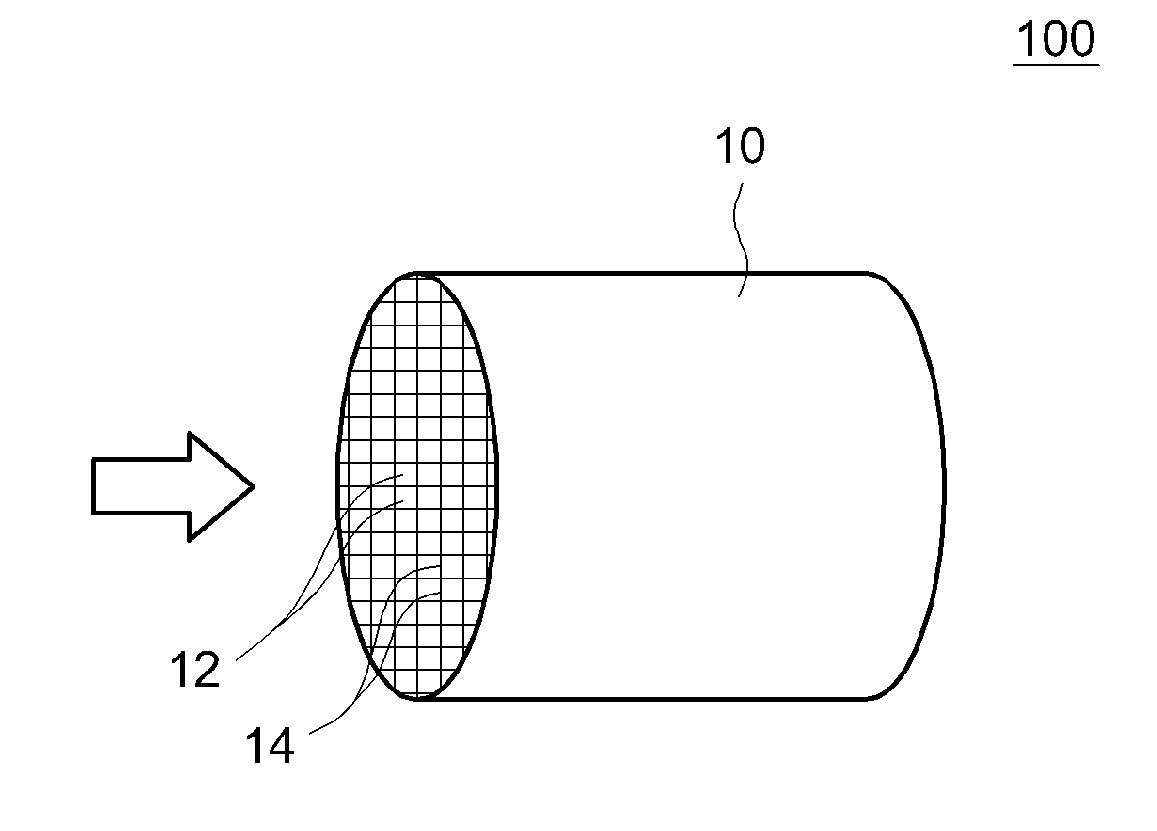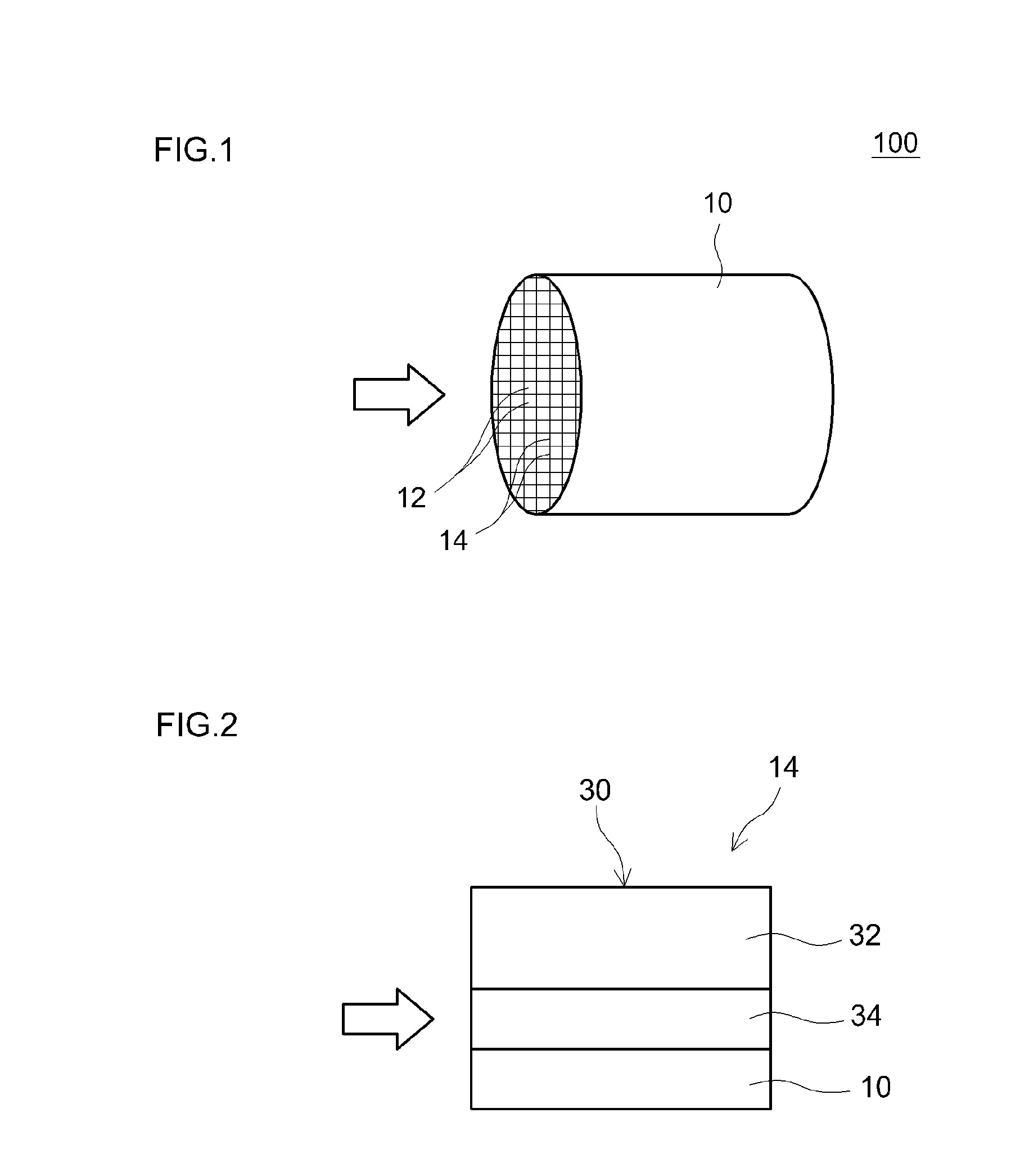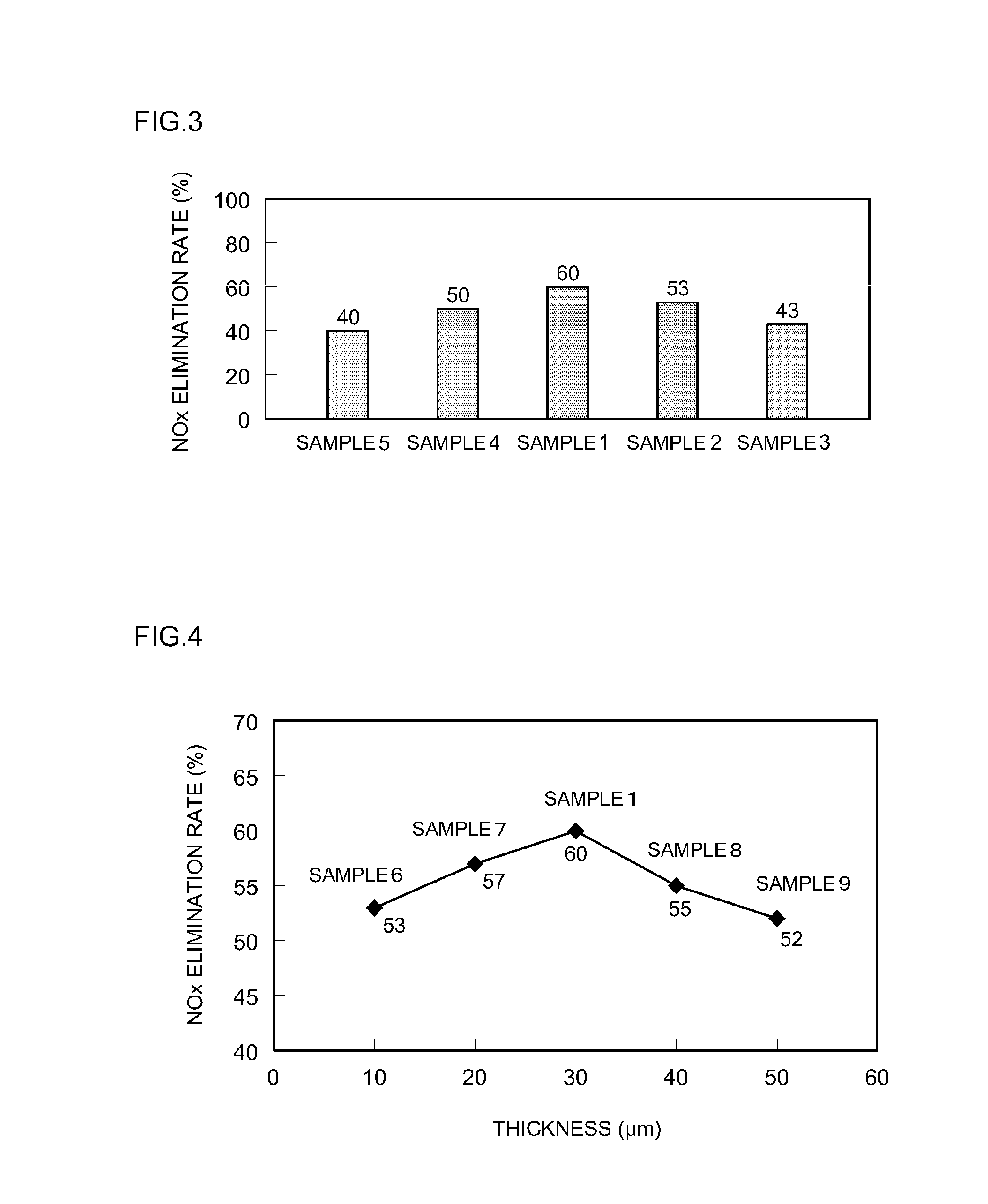Exhaust gas purifying catalyst
a technology of exhaust gas and purifying catalyst, which is applied in the direction of physical/chemical process catalyst, metal/metal-oxide/metal-hydroxide catalyst, separation process, etc., can solve the problems of insufficient elimination of nox and inability to achieve desired nox elimination performance, etc., to achieve high purification performance, high durability, and high nox elimination performance
- Summary
- Abstract
- Description
- Claims
- Application Information
AI Technical Summary
Benefits of technology
Problems solved by technology
Method used
Image
Examples
experimental example 1
[0046]Explanations will now be given of experimental examples relating to the present invention, but it is not intended that the present invention is limited to these experimental examples.
[0047]In the present example, a catalyst coat layer was produced by arranging a noble metal-supporting alumina as the upper layer and arranging a noble metal-free OSC material as the lower layer. Specifically, a slurry A was obtained by mixing 100 g of a CeO2—ZrO2 complex oxide (hereinafter referred to as a CZ oxide) having a fluorite type structure as a noble metal-free OSC material, 50 g of alumina and water, and milling the obtained mixture. A lower layer 34 formed of a noble metal-free layer that did not contain a noble metal was formed on the surface of a honeycomb substrate by wash coating the substrate with this slurry A, drying for 1 hour at a temperature of 250° C. and then firing for 1 hour at a temperature of 500° C. The thickness of the lower layer was 30 . In addition, a slurry B (hav...
experimental example 2
[0054]In Samples 6 to 9, exhaust gas purifying catalysts were produced by varying the thickness of the noble metal-free layer (lower layer) that contained a noble metal-free OSC material in the catalyst coat layer of Sample 1 between 10 μm and 50
[0055]In Sample 6, 60 g of a CZ oxide and 30 g of alumina were mixed in slurry A, and the thickness of the lower layer was 10 μm. In Sample 7, 80 g of a CZ oxide and 40 g of alumina were mixed in slurry A, and the thickness of the lower layer was 20 μm. In Sample 8, 120 g of a CZ oxide and 60 g of alumina were mixed in slurry A, and the thickness of the lower layer was 40 μm. In Sample 9, 140 g of a CZ oxide and 70 g of alumina were mixed in slurry A, and the thickness of the lower layer was 50 μm. Other than this, exhaust gas purifying catalysts were obtained using the same procedure as that used for Sample 1. The NOx elimination rates of the exhaust gas purifying catalysts obtained in the samples were evaluated. The results are shown in FI...
experimental example 3
[0057]In Samples 10 to 14, exhaust gas purifying catalysts were produced by varying the blending ratio of the noble metal-free OSC material (CZ oxide) and the alumina (CZ oxide / alumina ratio) contained in the noble metal-free layer (lower layer) in the catalyst coat layer of Sample 1 within the range 1 / 3 to 4 / 1.
[0058]In Sample 10, 38 g of a CZ oxide and 112 g of alumina were mixed in slurry A, and the blending ratio (CZ oxide / alumina) was 1 / 3. In Sample 11, 50 g of a CZ oxide and 100 g of alumina were mixed in slurry A, and the blending ratio (CZ oxide / alumina) was 1 / 2. In Sample 12, 75 g of a CZ oxide and 75 g of alumina were mixed in slurry A, and the blending ratio (CZ oxide / alumina) was 1 / 1. In Sample 13, 112 g of a CZ oxide and 38 g of alumina were mixed in slurry A, and the blending ratio (CZ oxide / alumina) was 3 / 1. In Sample 14, 120 g of a CZ oxide and 30 g of alumina were mixed in slurry A, and the blending ratio (CZ oxide / alumina) was 4 / 1. Other than this, exhaust gas purif...
PUM
| Property | Measurement | Unit |
|---|---|---|
| thickness | aaaaa | aaaaa |
| thickness | aaaaa | aaaaa |
| thickness | aaaaa | aaaaa |
Abstract
Description
Claims
Application Information
 Login to View More
Login to View More - R&D
- Intellectual Property
- Life Sciences
- Materials
- Tech Scout
- Unparalleled Data Quality
- Higher Quality Content
- 60% Fewer Hallucinations
Browse by: Latest US Patents, China's latest patents, Technical Efficacy Thesaurus, Application Domain, Technology Topic, Popular Technical Reports.
© 2025 PatSnap. All rights reserved.Legal|Privacy policy|Modern Slavery Act Transparency Statement|Sitemap|About US| Contact US: help@patsnap.com



